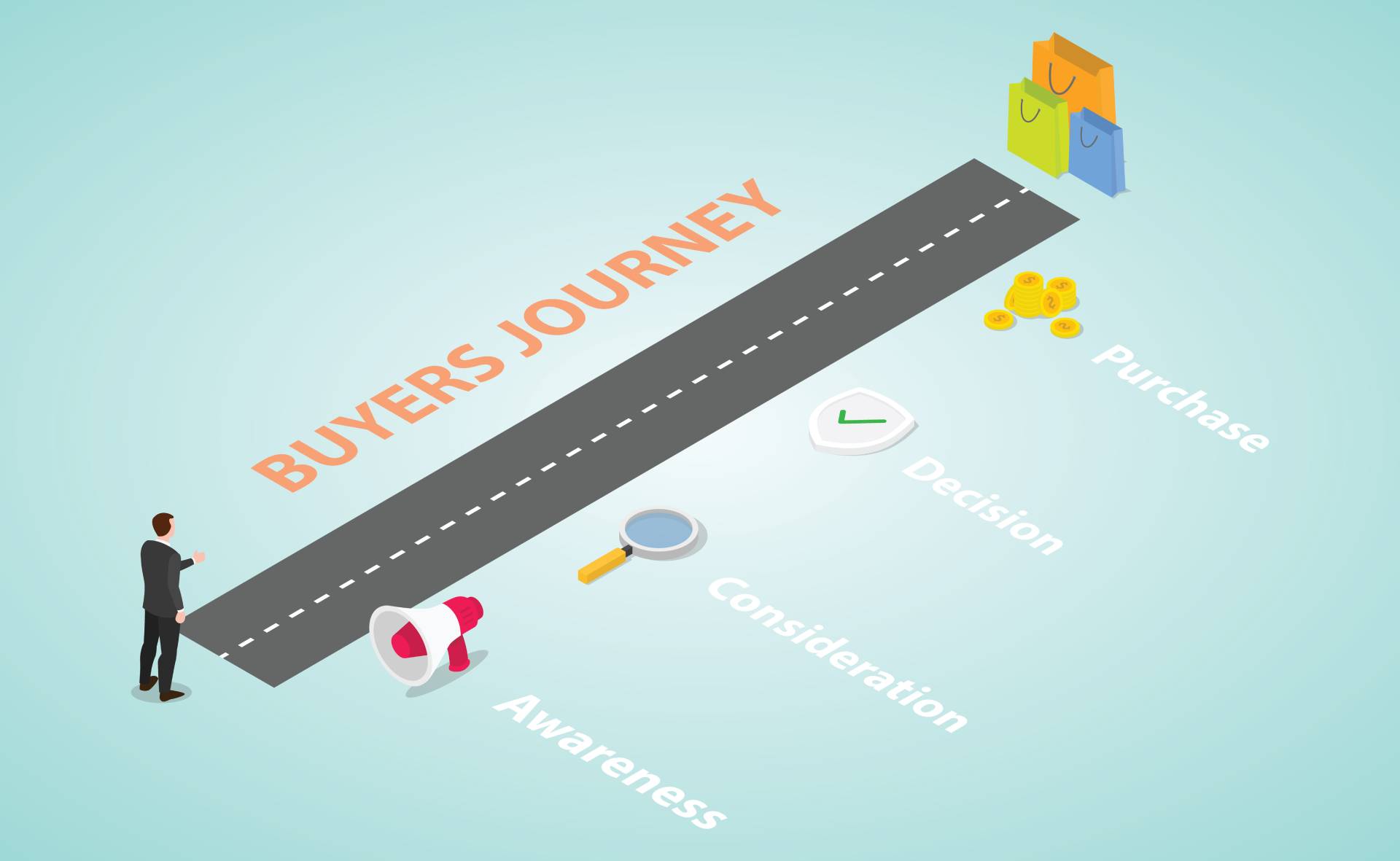When it comes to selling your product or service, it’s essential to understand that people don’t just purchase the spot. To better understand how you can guide your prospects through the decision-making process, you need to be familiar with the three different stages stages of the buyer’s journey: awareness, consideration, and decision.
What Is the Buyer’s Journey?
The buyer’s journey is the buying process that your prospective customers go through when they become aware of, consider, and make a purchase. This is also sometimes referred to as the sales funnel because as you move people through each stage of the journey, they become more “qualified” prospects, which ultimately leads to more sales.
Also Read: 7 Reasons Why SEO is Important for Business?
Three Stages of the Buyer’s Journey
Awareness Stage (Top-of-the-funnel)
The first stage of the buyer’s journey is awareness. This is when your potential customer becomes aware that they have a problem or a need that needs to be addressed.
During these early stages, they are not yet considering any specific solutions, but they begin researching to see what options are available to them. Your goal is to reach out to these prospects and make them aware of your product or service as potential solutions to their pain points
Consideration Stage (Middle-of-the-funnel)
The second stage of the buyer’s journey is consideration. This is when your prospective customers start to compare potential solutions to their problems and narrow down their options.
At this stage, they will be looking for more information about the features and benefits of each option, as well as pricing information. Your goal is to provide them with the information they need to make an informed decision and help them see how your product or service is the best solution for their needs.
Decision Stage (Bottom-of-the-funnel)
The third stage of the buyer’s journey is the decision. This is when your potential customer has decided on a specific solution and is ready to make a purchase.
At this stage, they will be looking for information about how to make the purchase and what the next steps are. Your goal is to make the purchase process as easy and seamless as possible so your prospect decides to become a customer.
Why the Buyer’s Journey Matters?
The buyer’s journey is critical to understand because it can help you better align your marketing and sales process with the needs of your potential customers on their buyer journey. By understanding what stage they are in, you can tailor your messaging and approach to better meet their needs and guide them through the buying process.
Additionally, the buyer’s journey can help you determine what content to create and what channels to use to reach potential customers during their buying journey. For example, if you are trying to reach someone in the awareness stage, you would want to create educational and informative content and distribute it through channels like social media and blog posts.
In contrast, if you are trying to reach someone in the decision stage, you would want to create content focused on your product or service and distribute it through channels like paid advertising and email marketing.
The bottom line is that understanding the buyer’s journey can help you better connect with your target audience and close more sales.
Also Read: Top 7 Advantages of Internet Marketing in 2022
Types of Contentfor Each Stage
For the Awareness Stage
Blog Posts: Blog posts are a great way to provide your potential customers with information about their problem or need. By creating informative and educational blog posts, you can help them become aware of your product or service as a potential solution.
Videos: Using videos on Youtube, Facebook, or your website is another great way to reach potential customers and create awareness stage content. When you create content that is informative and educational, you can help them become aware of your product or service as a potential solution.
Infographics: Creating infographics is another great way to reach potential customers in the awareness stage. They are a great way to visually represent information and make it easy for people to understand.
For the Consideration Stage
eBooks / Downloadable Resources: Ebooks and other downloadable resources are a great way to provide your potential customers with more information about your product or service in the consideration stage. By creating an ebook or resource relevant to their needs, you can help them see your product or service as a potential solution that addresses their pain point.
Comparison Videos: Comparison videos are a great way to help your potential customers see the differences between your product or service and other similar products or services. By creating a video that compares your product or service to others, you can help them see how your product or service is the best solution for their needs.
Articles: Articles are a great way to provide your potential customers with in-depth information about your product or service. By creating informative and educational articles, you can help them see your product or service as the best solution for their needs.
Webinars / Live Demonstrations: Webinars and live demonstrations are a great way to provide your potential customers with an in-depth look at your product or service. By providing a detailed demonstration of your product or service, you can help them see how your product or service is the best solution for their needs.
For the Decision Stage
Whitepapers: Whitepapers are a great way to provide your potential customers with an in-depth look at your product or service. By providing a detailed and unbiased look at your product or service, you can help them see how your product or service is the best solution for their needs.
Reports: Reports are a great way to provide your potential customers with an in-depth look at your product or service. By providing a detailed and unbiased look at your product or service, you can help them see how your product or service is the best solution for their needs.
Use Cases: Use cases are a great way to provide your potential customers with an in-depth look at how your product or service can be used to solve their specific problems. By providing detailed information about how your product or service can be used, you can help them see how your product or service is the best solution for their needs.
Case Studies: Case studies are a great way to provide your potential customers with real-world examples of how your product or service has helped others. By creating a case study that is relevant to their needs, you can help them see how your product or service is the best solution for their needs.
Conclusion
When it comes to creating content, it’s crucial to think about the buyer’s journey and what type of content will be most helpful for each stage. By creating content that is tailored to each stage, you can better connect with your potential customers and guide them through the decision-making process.


